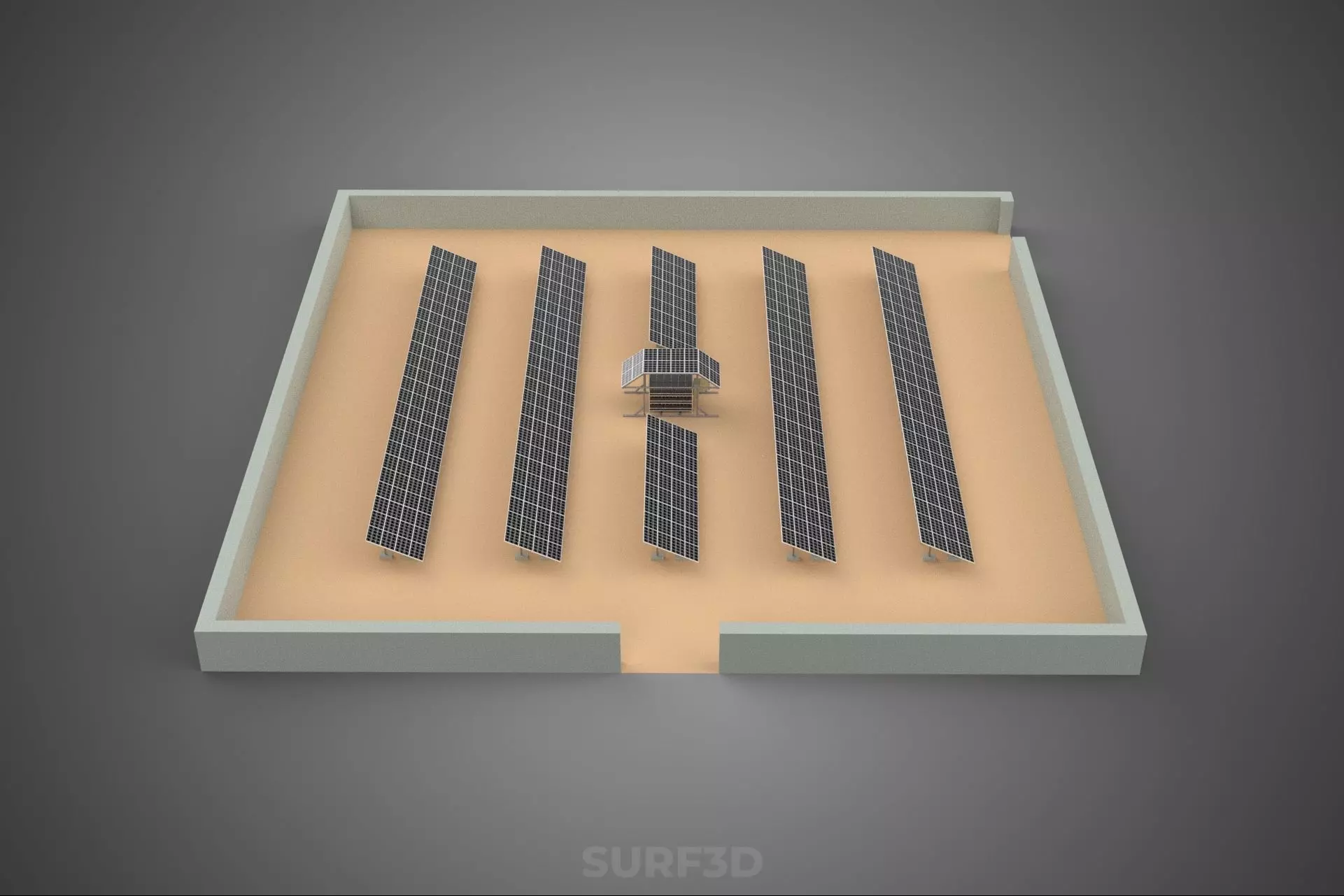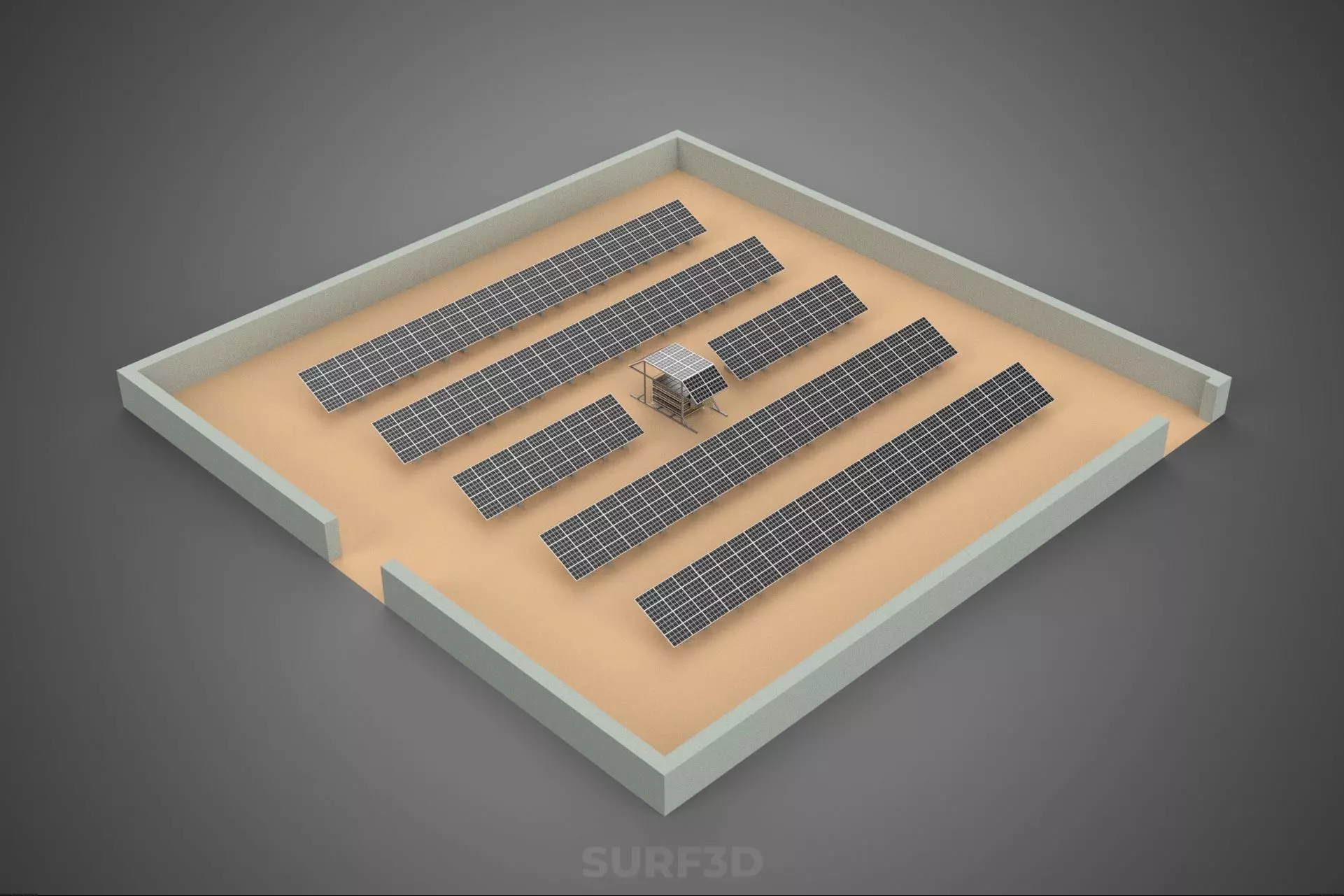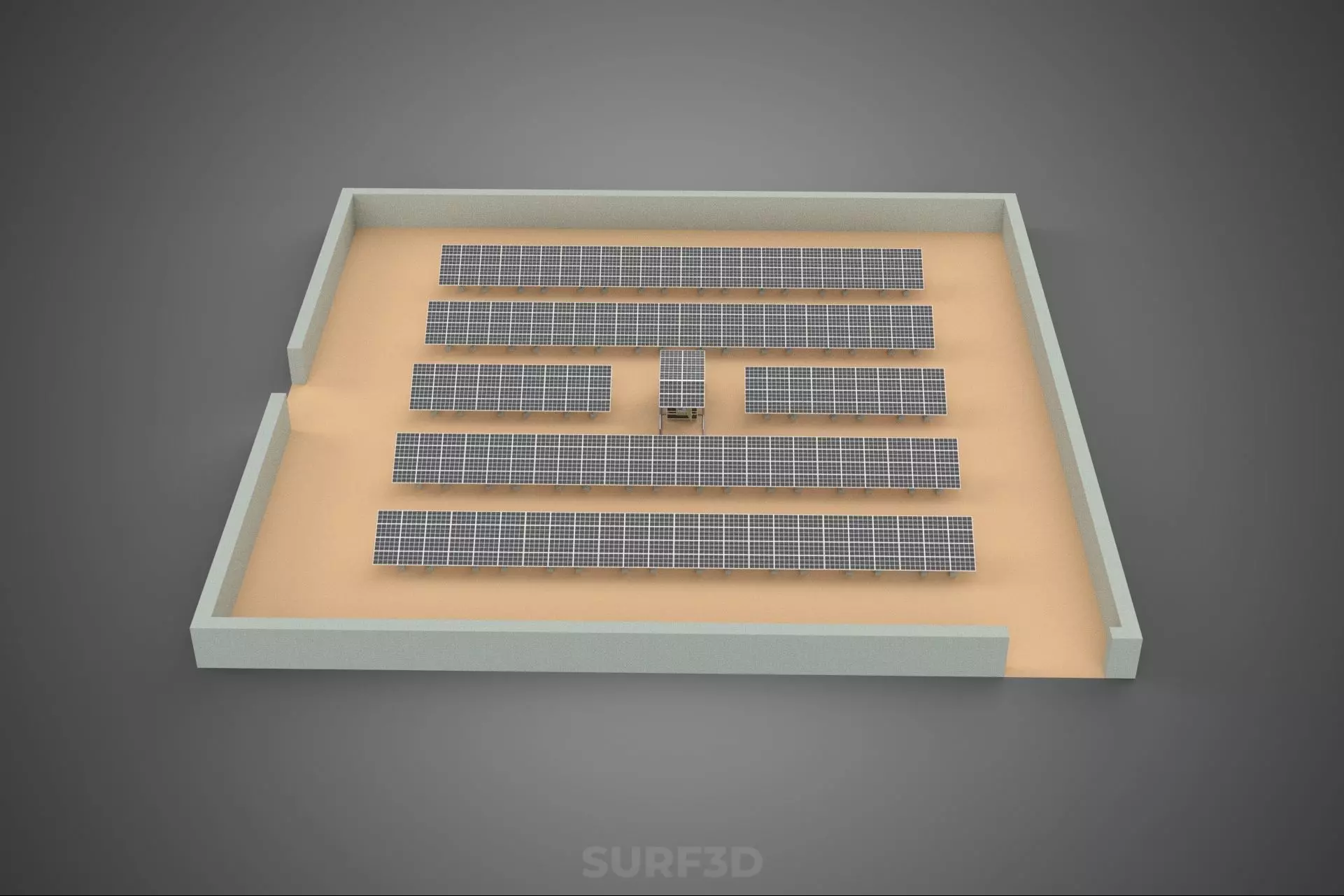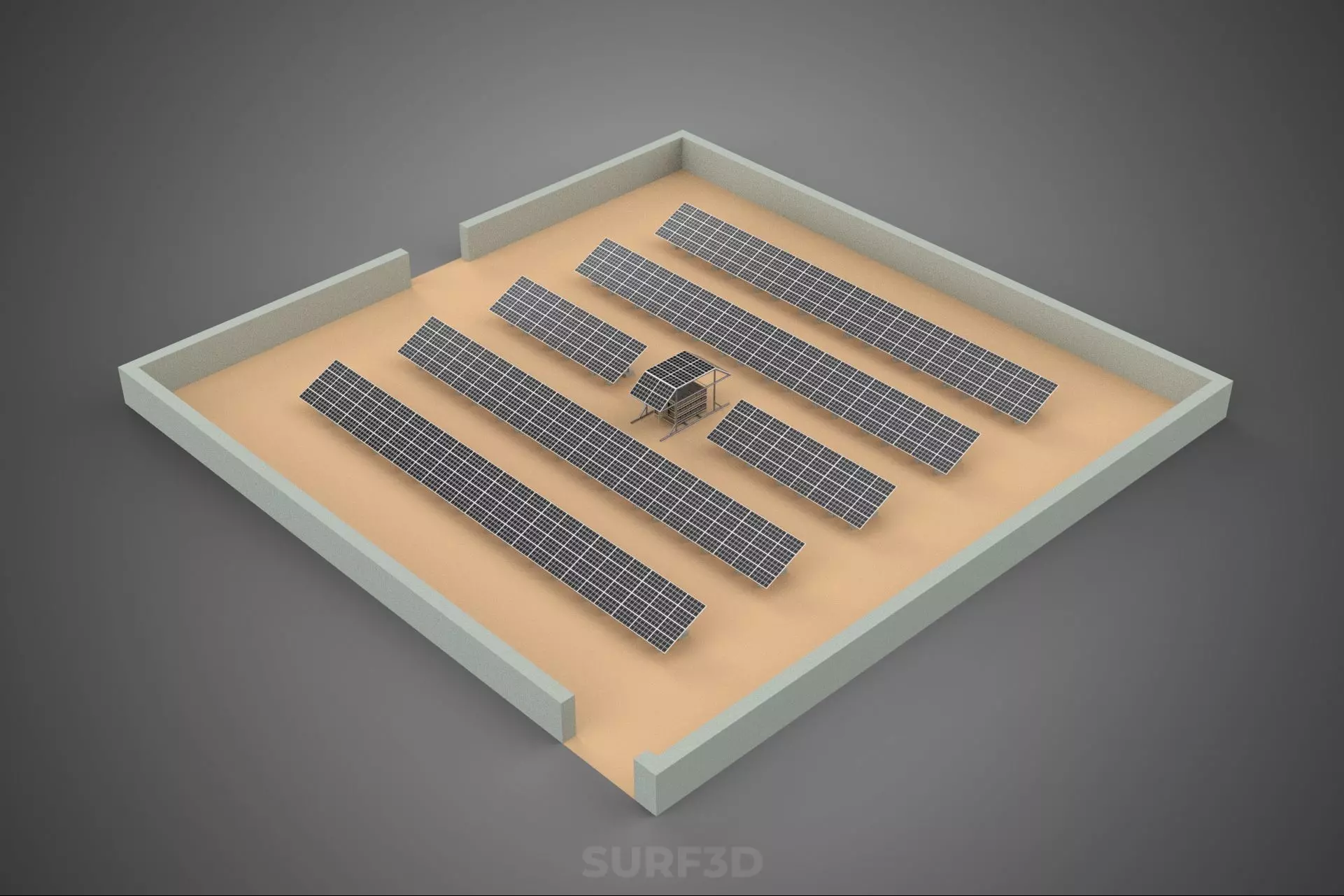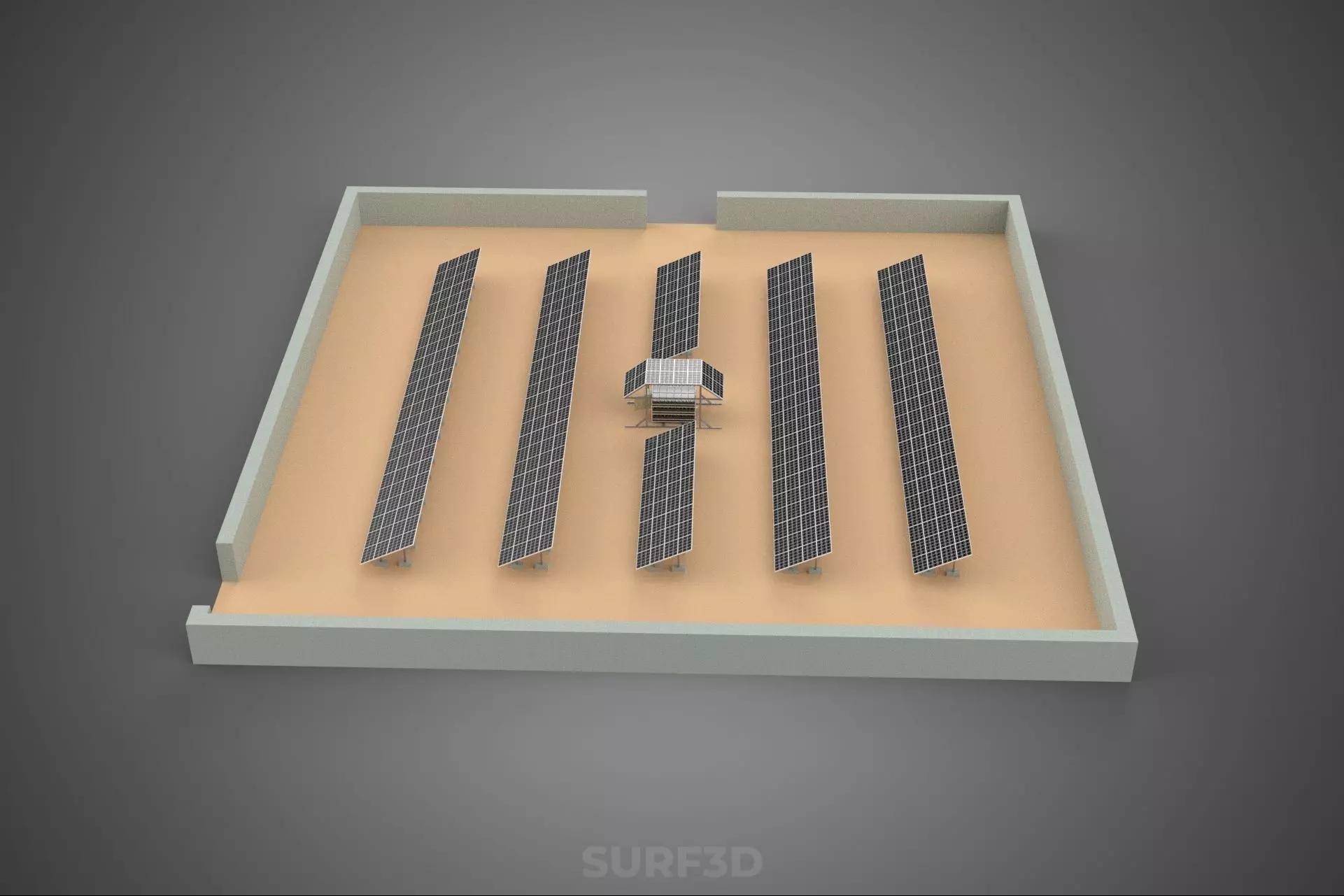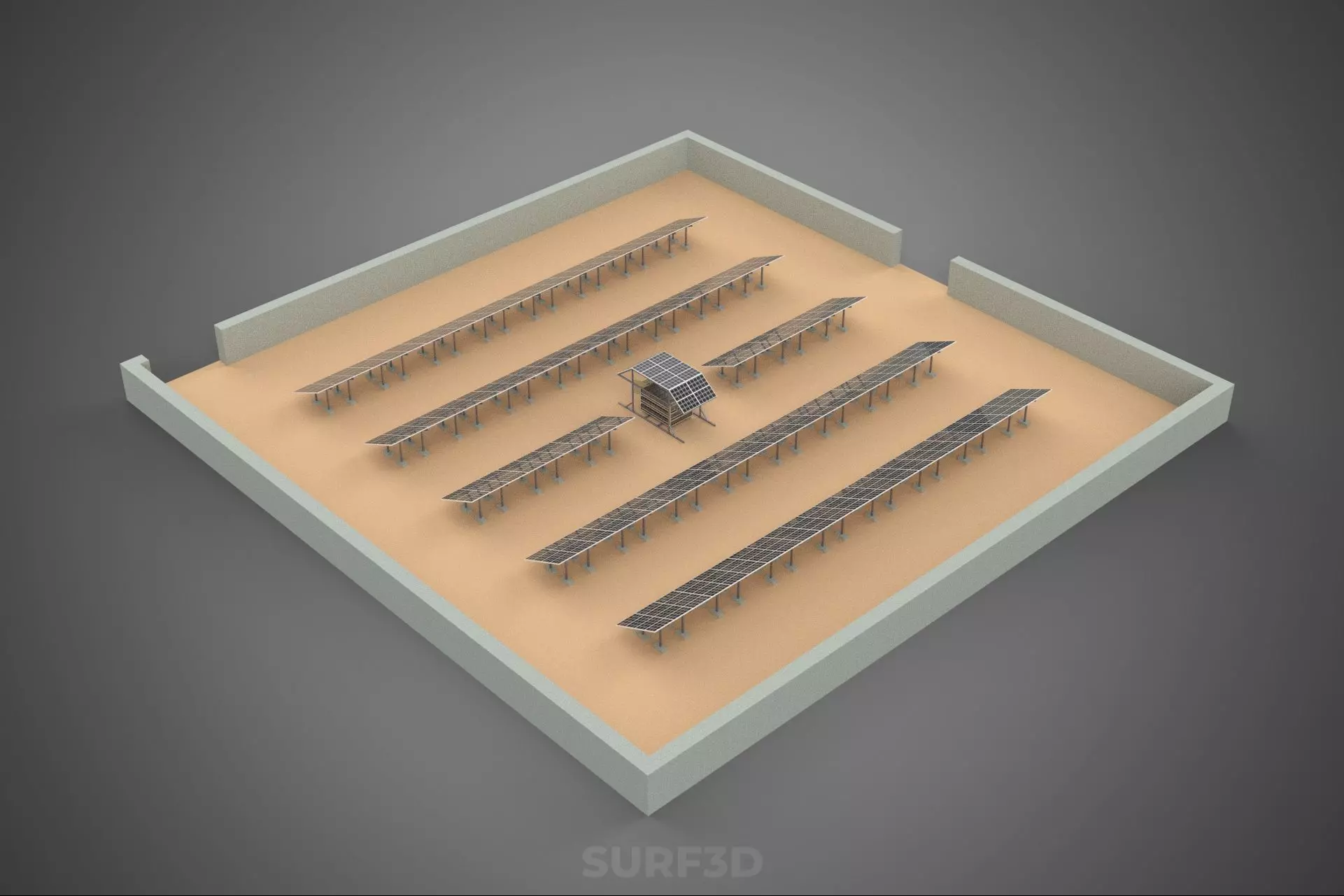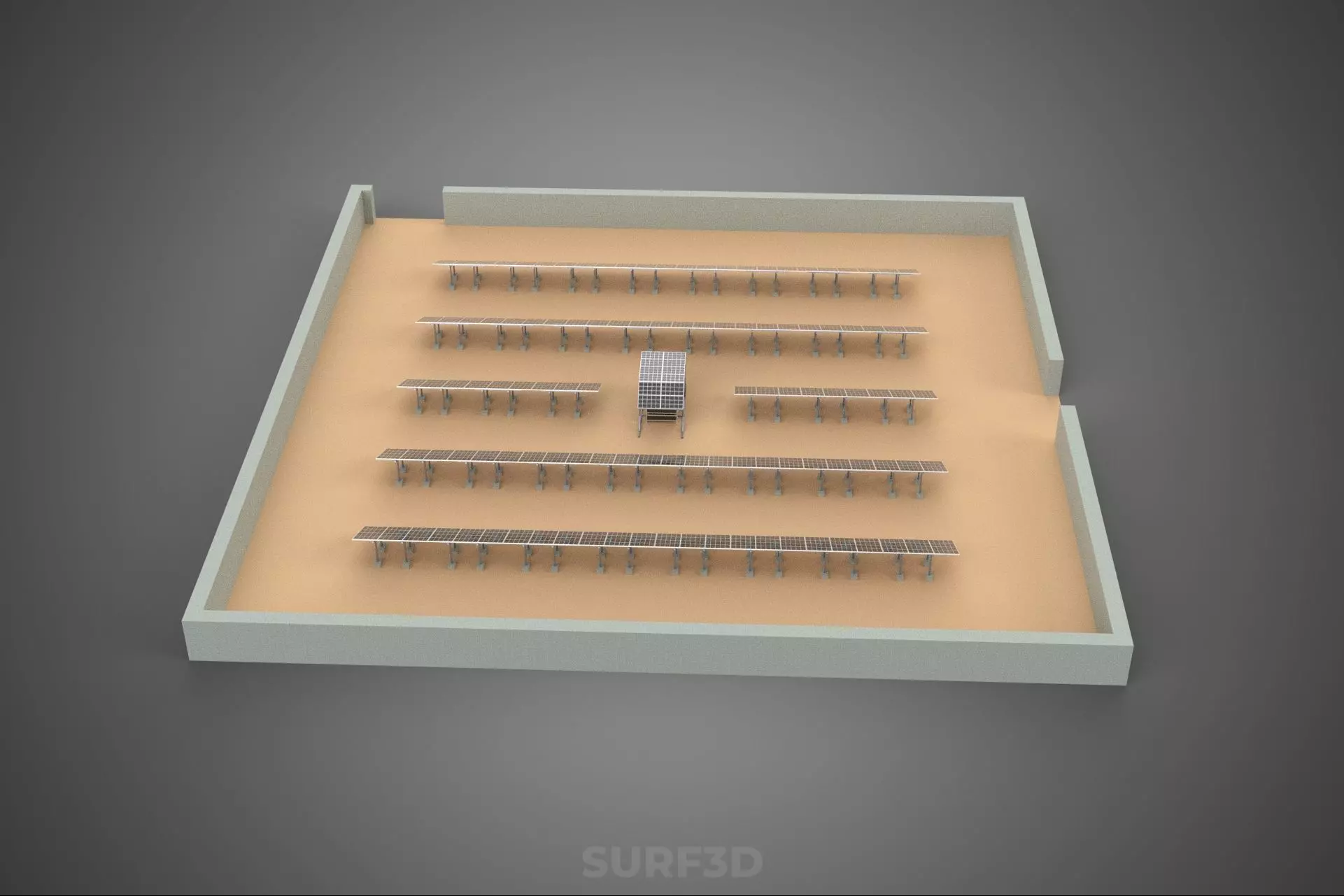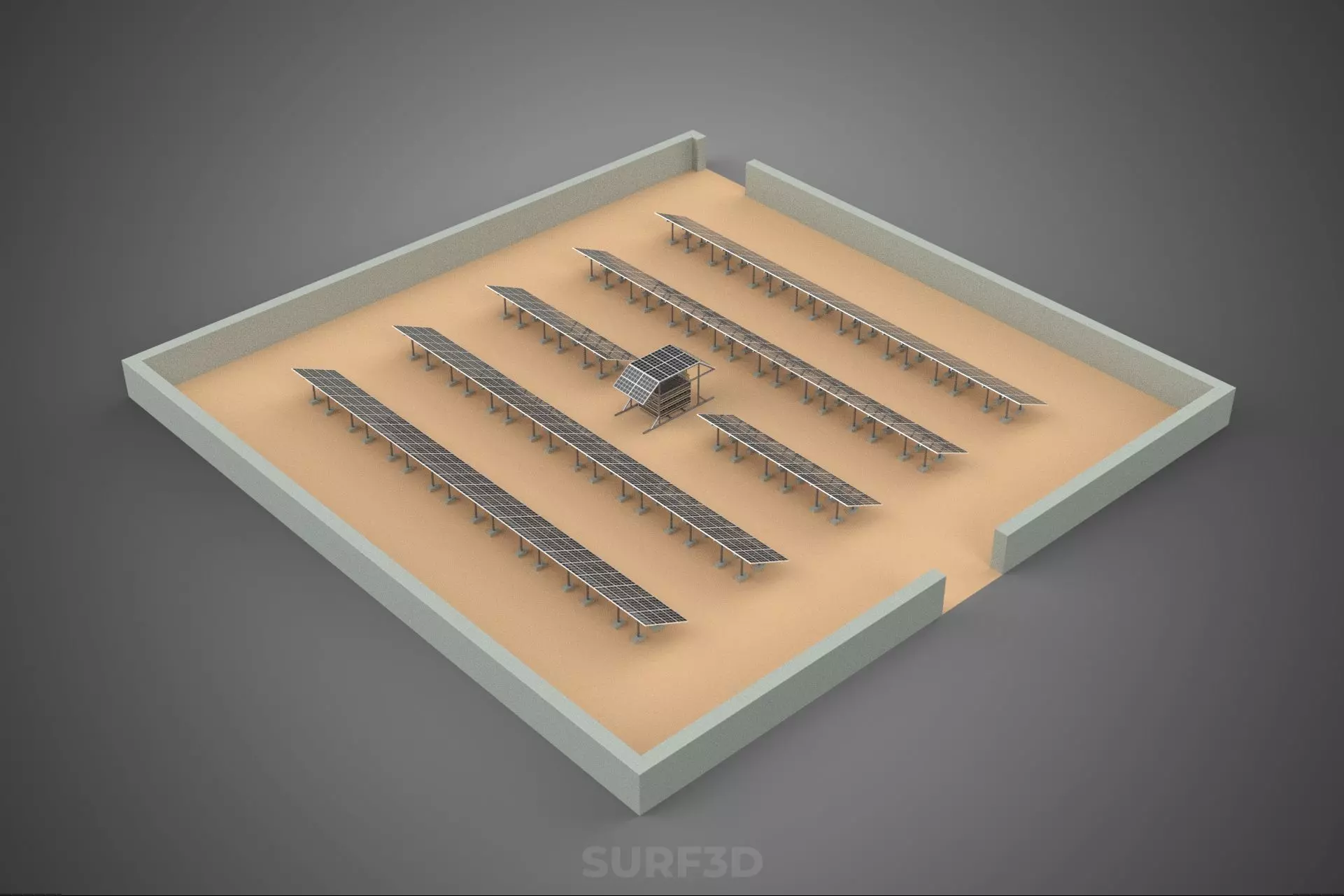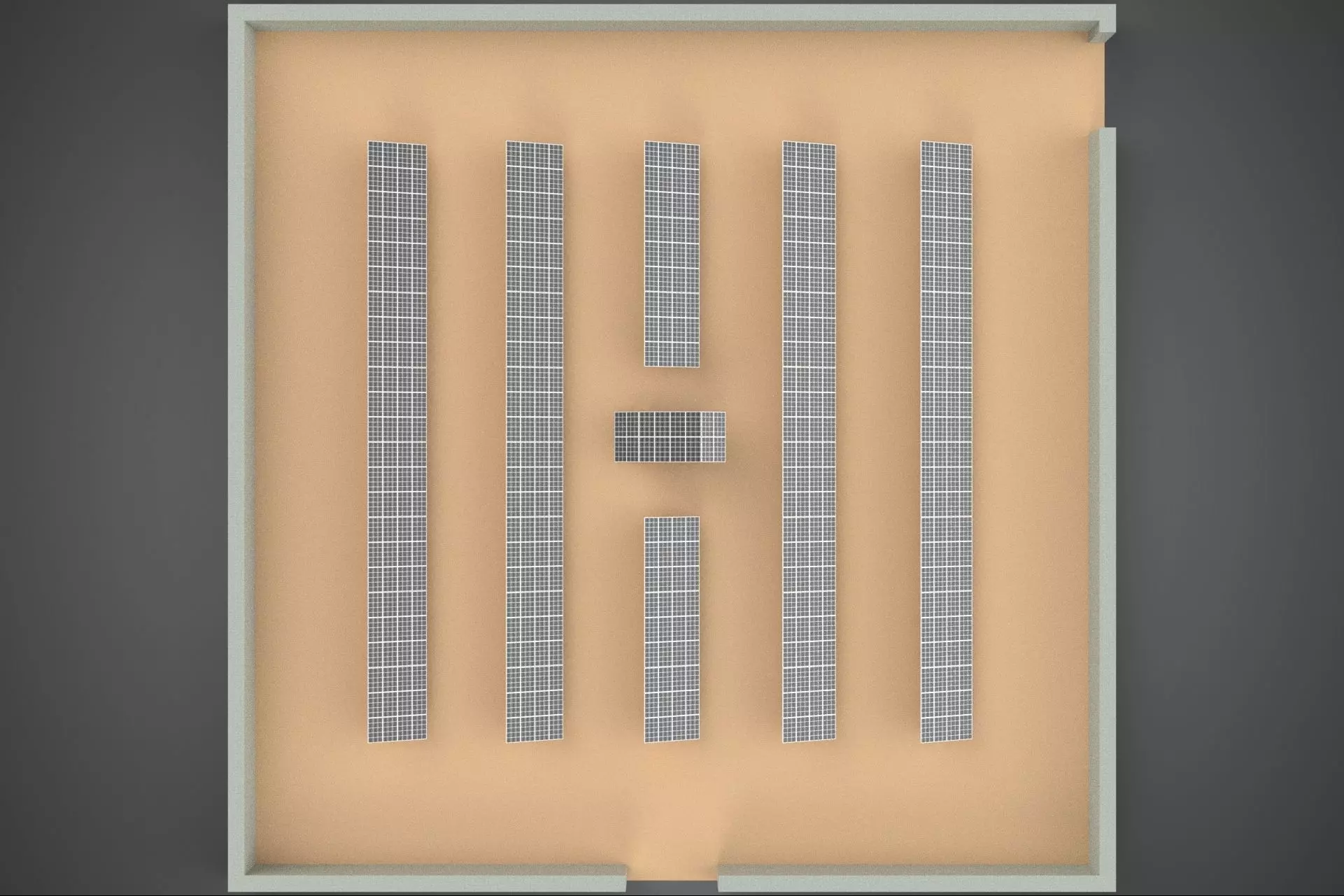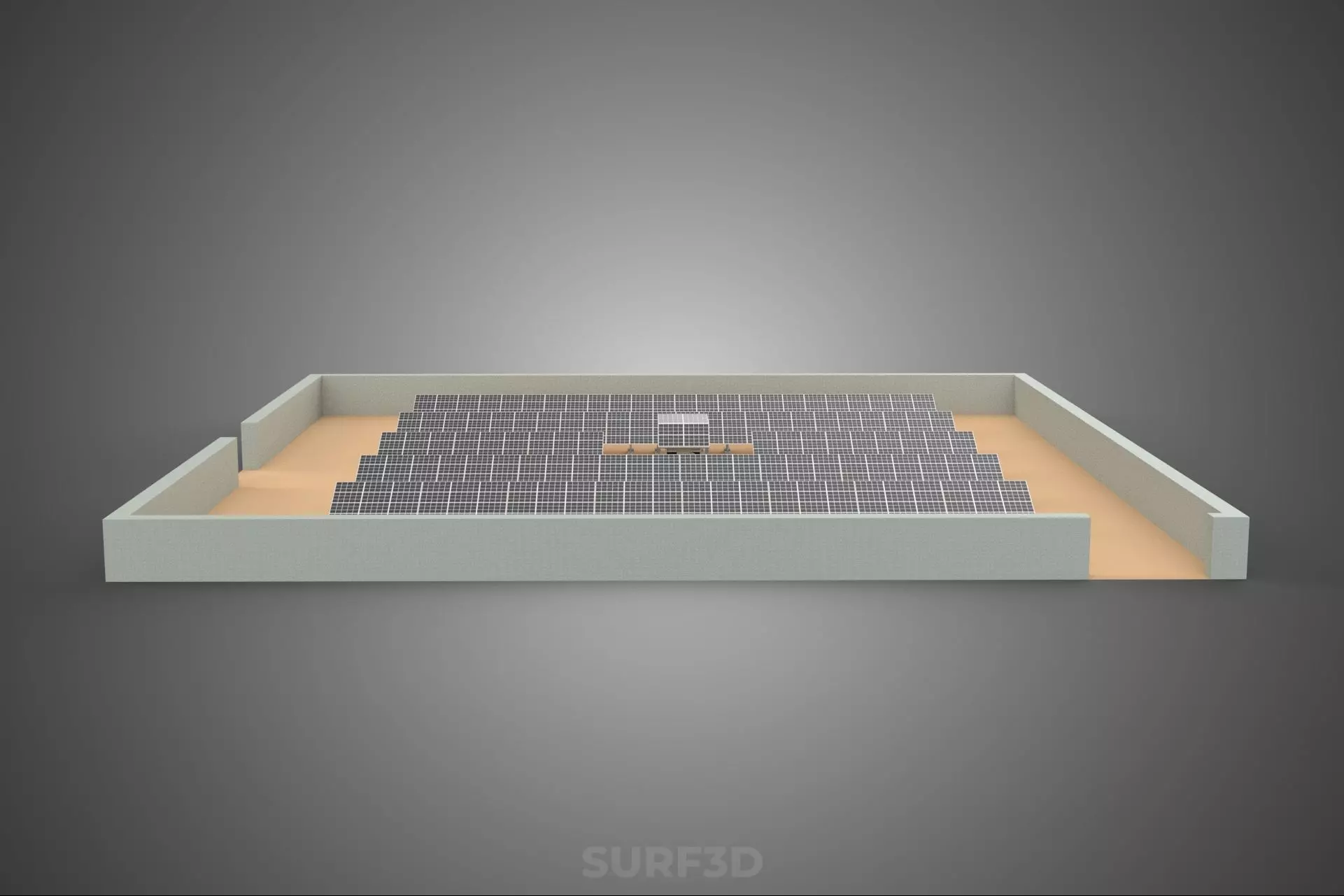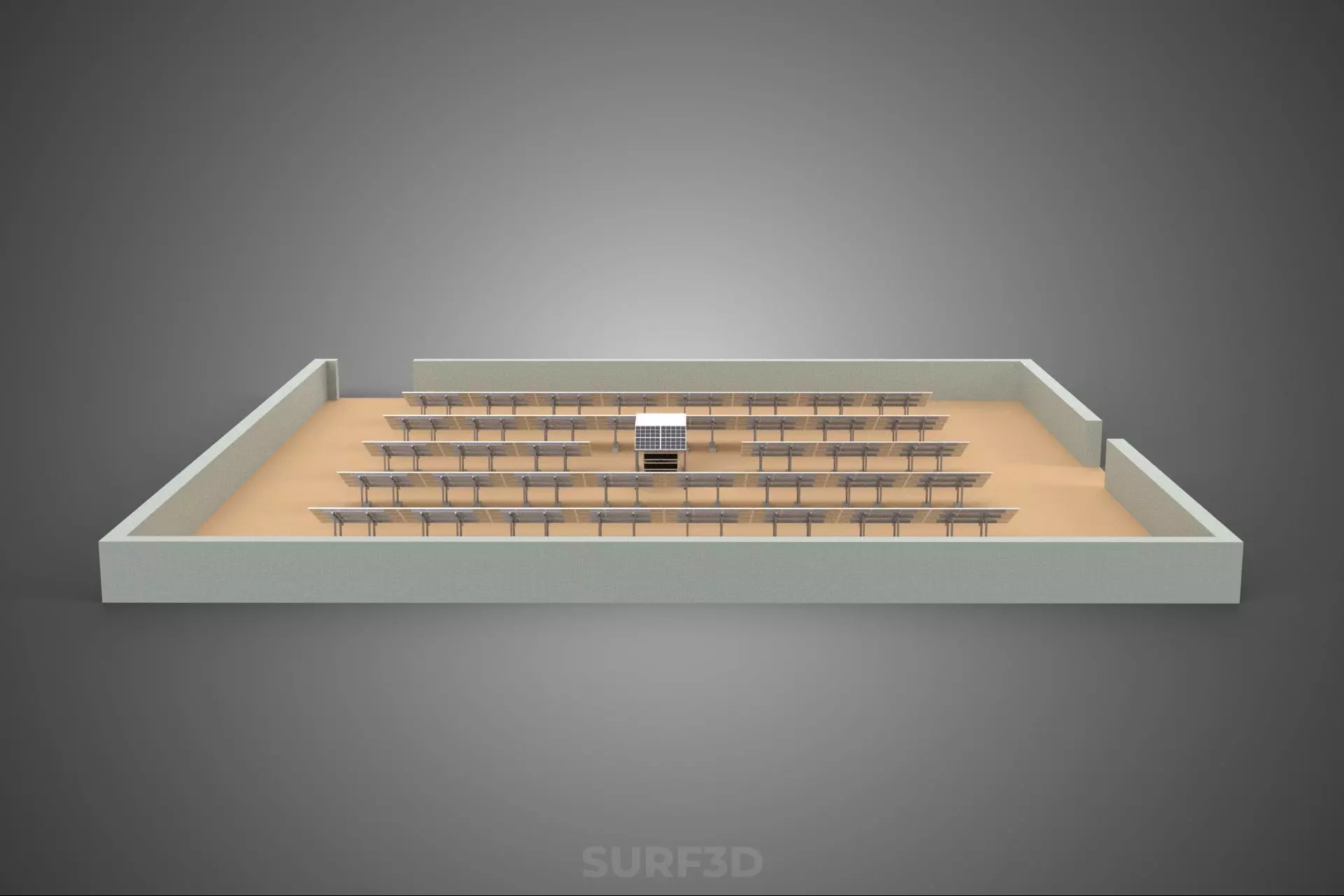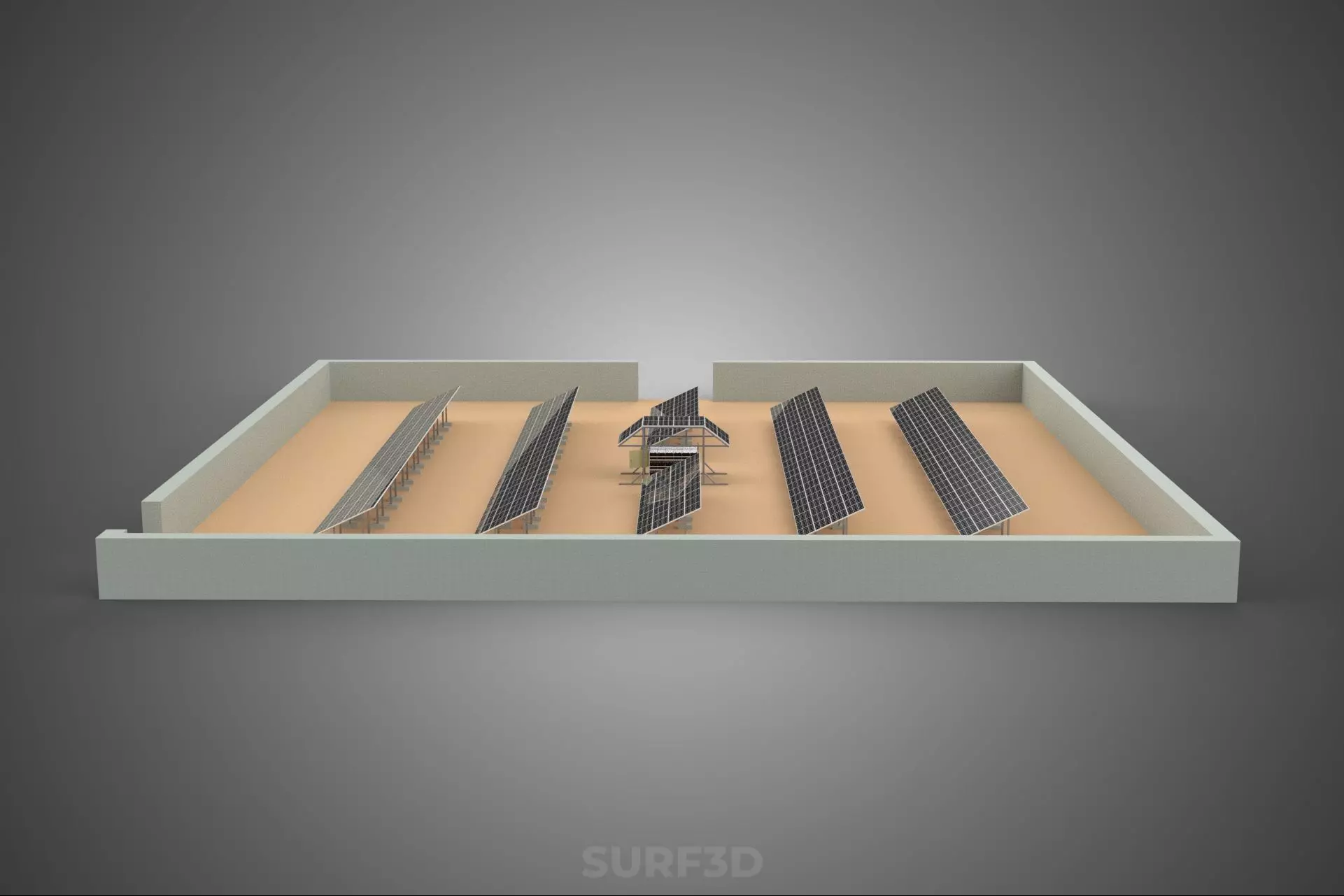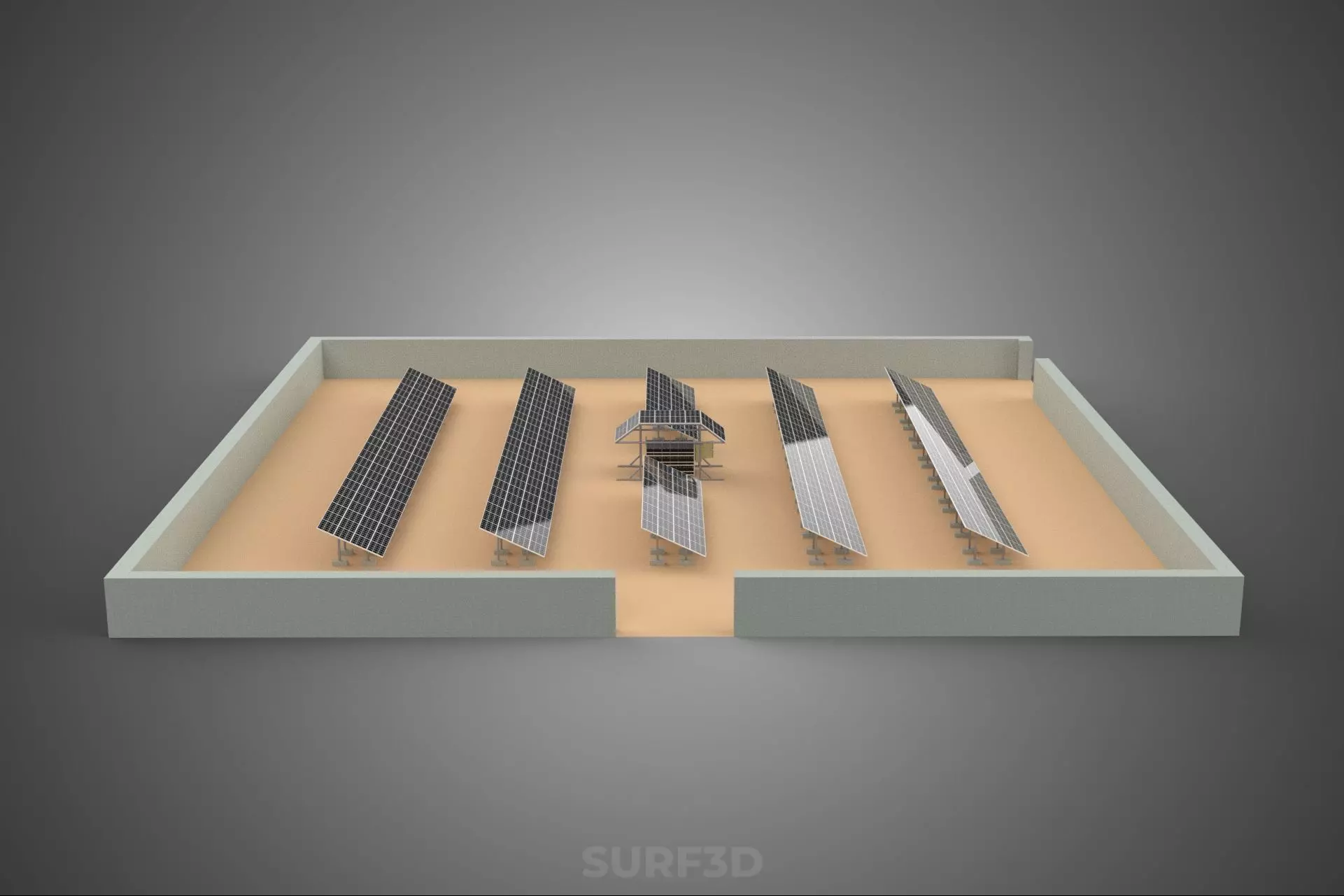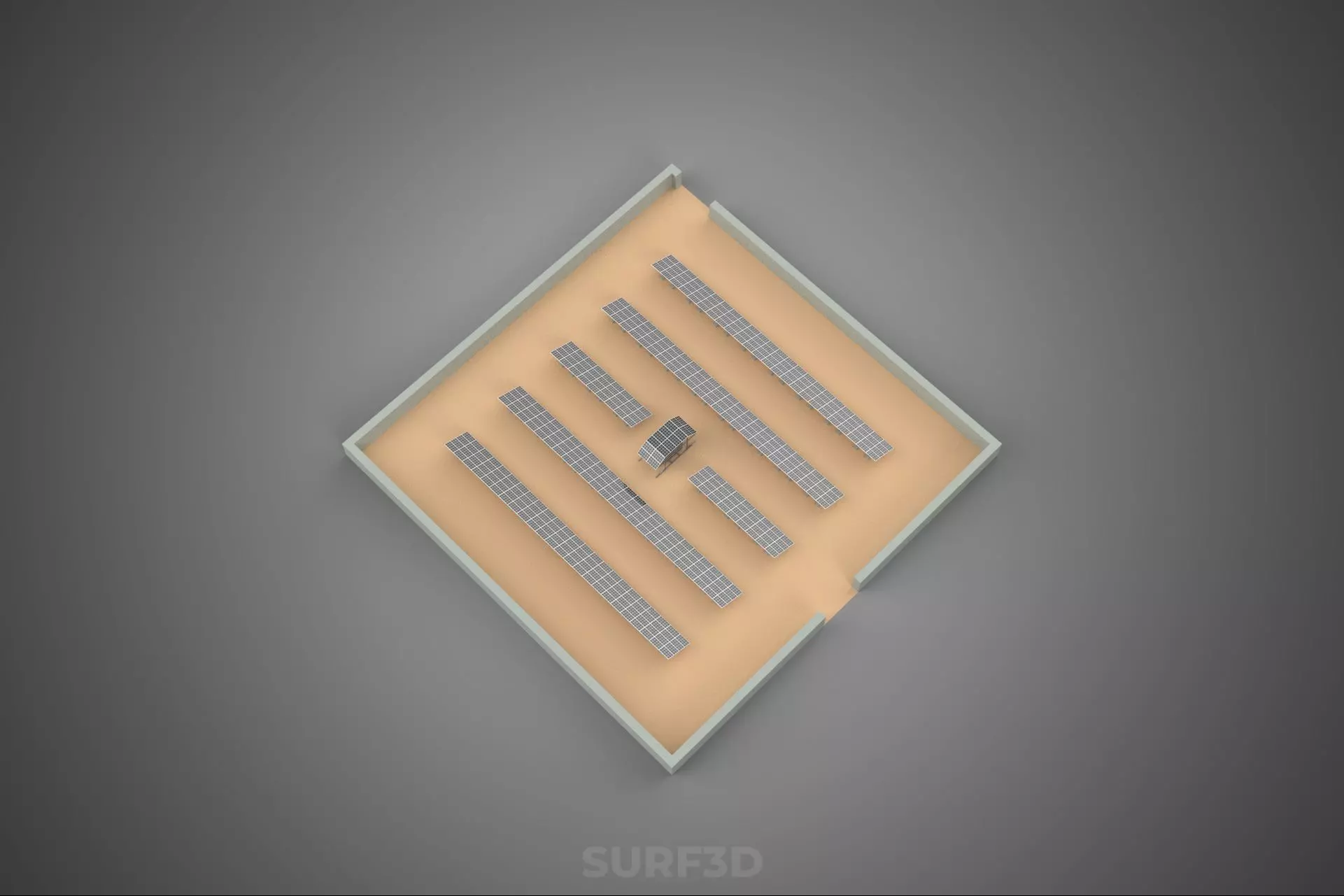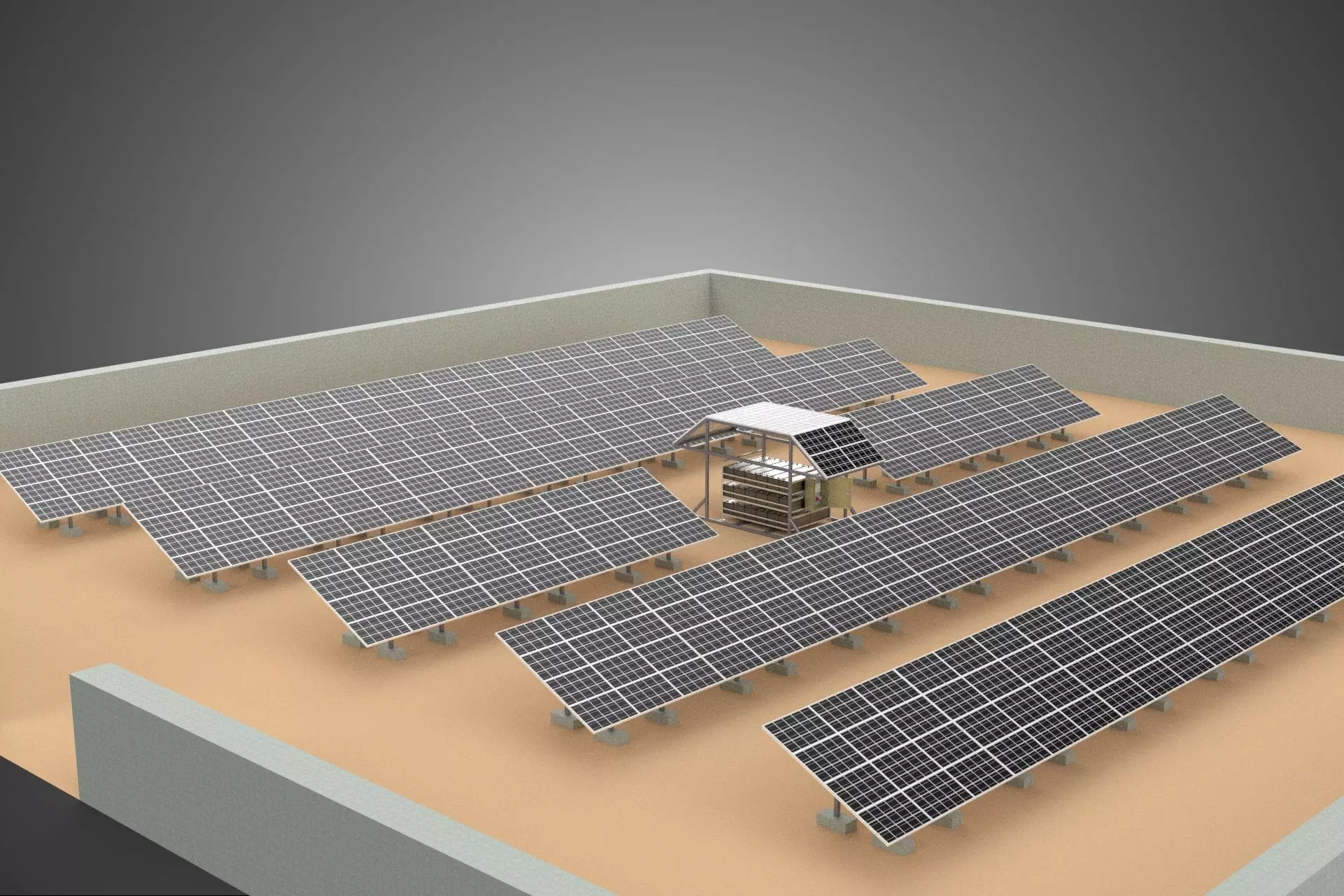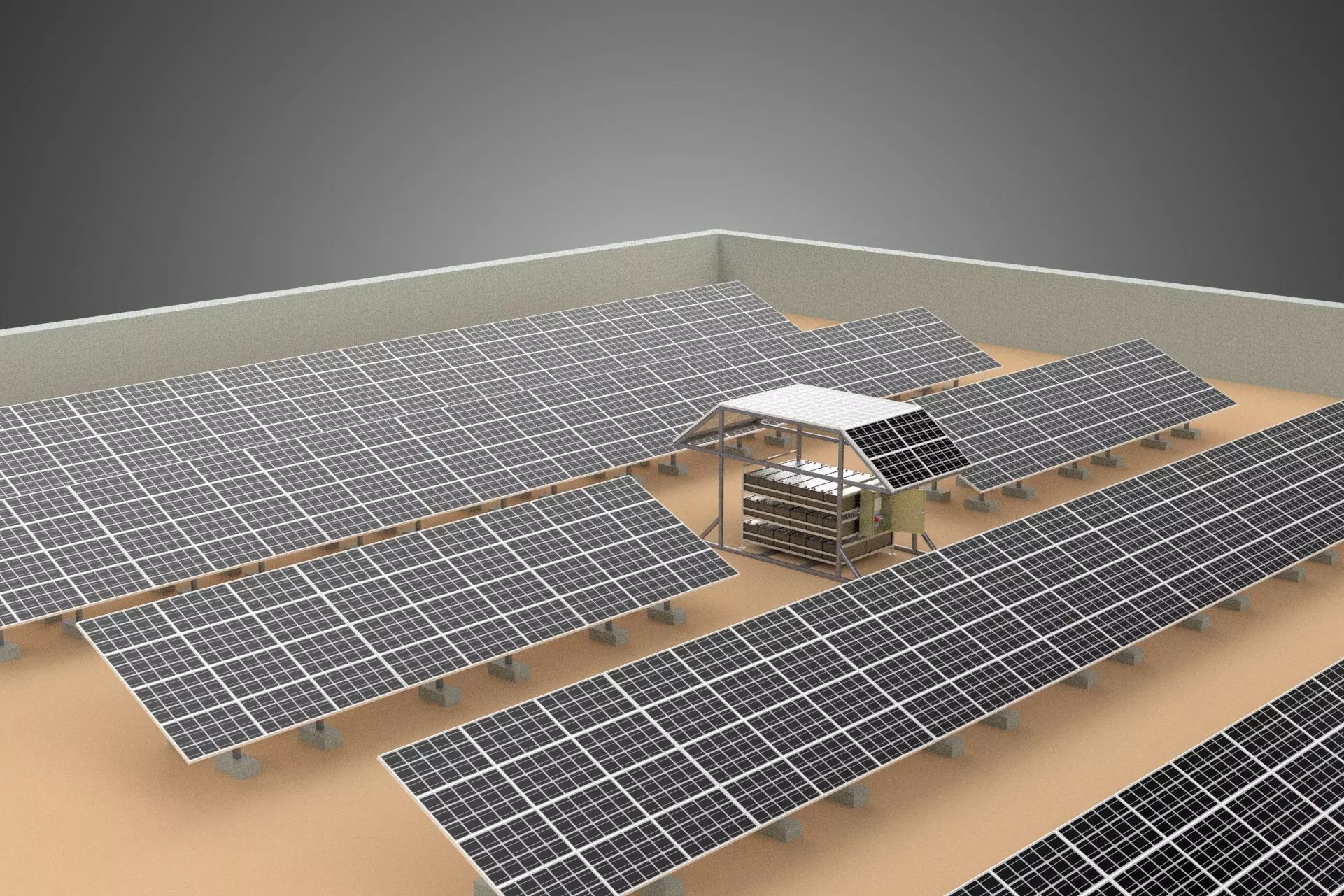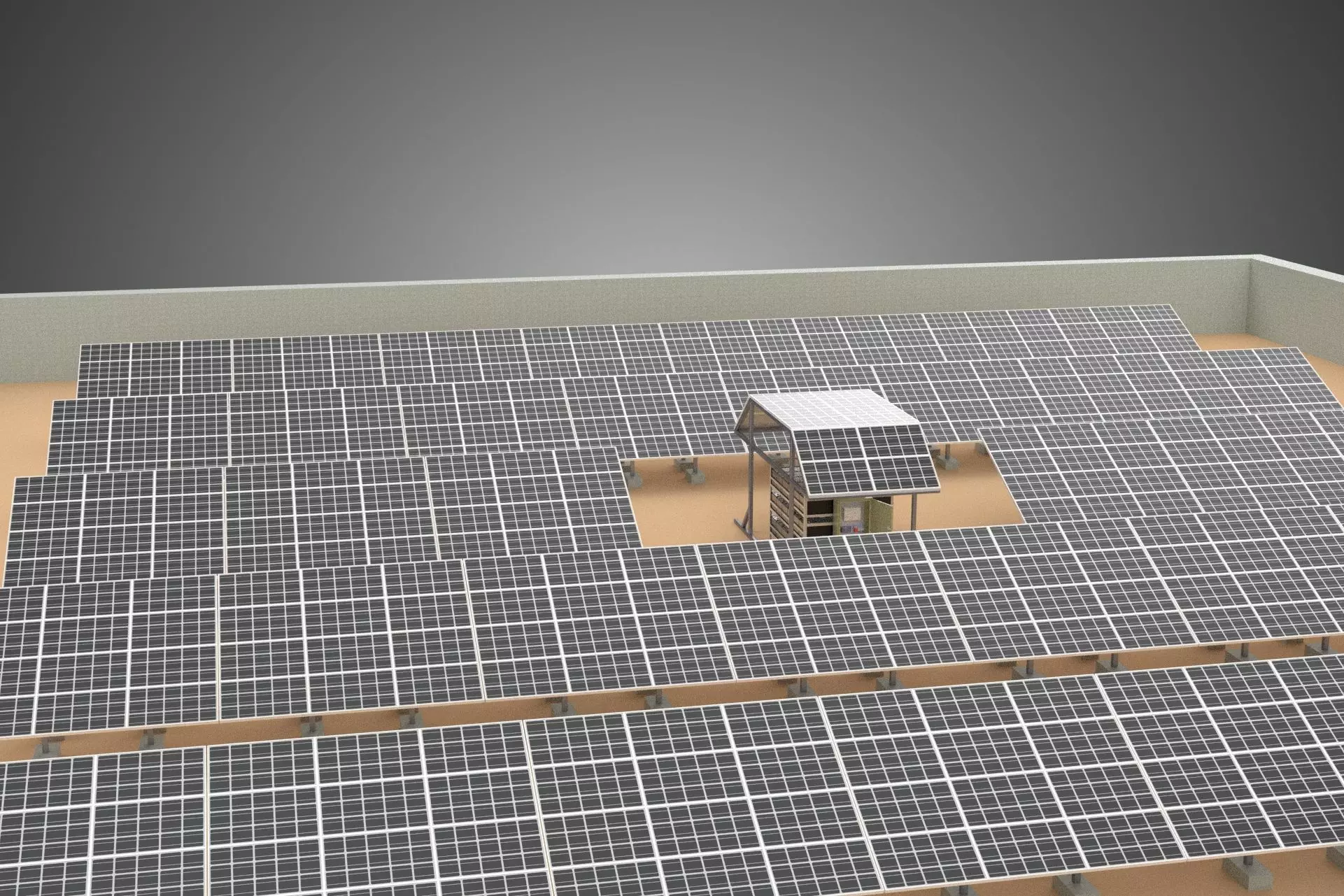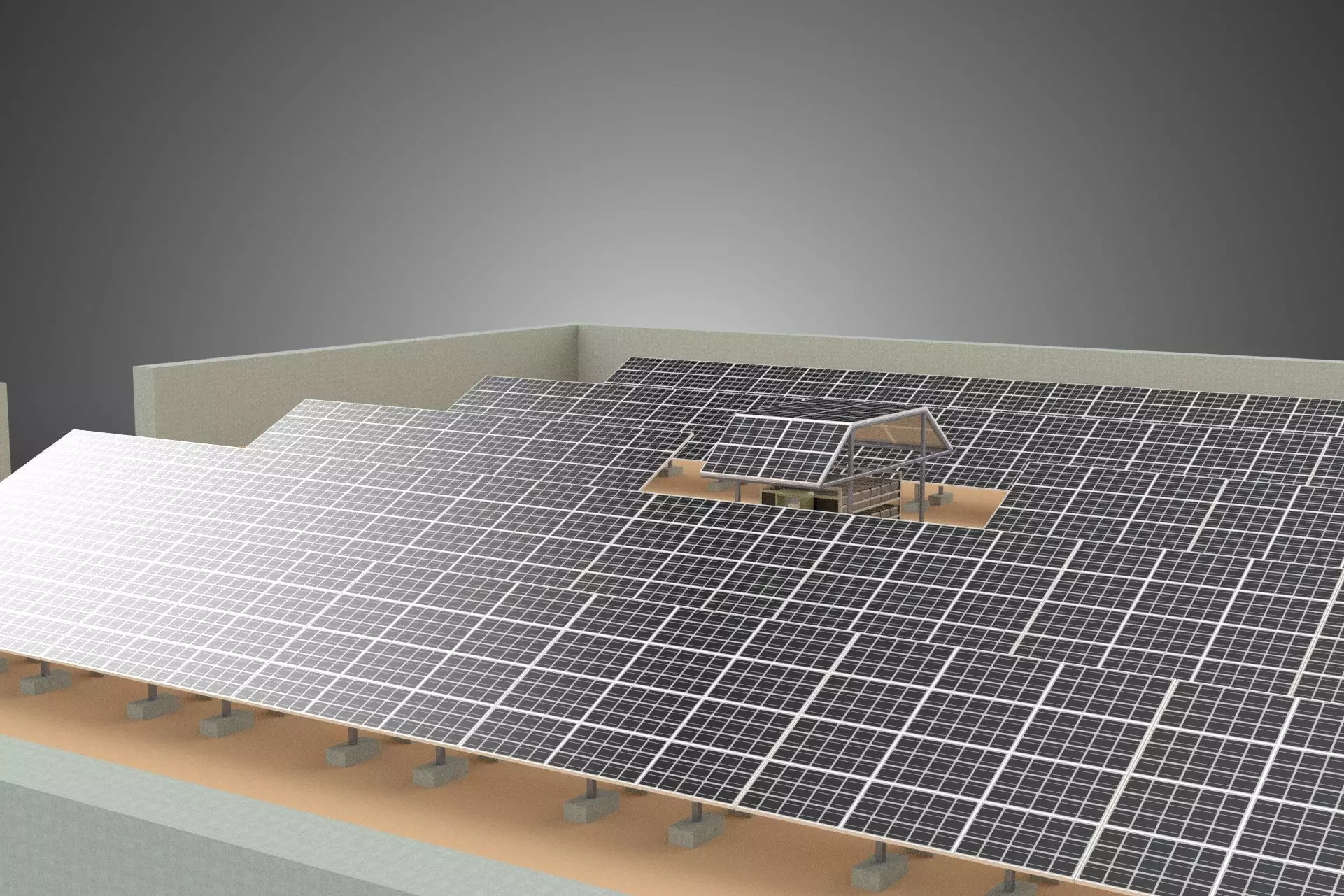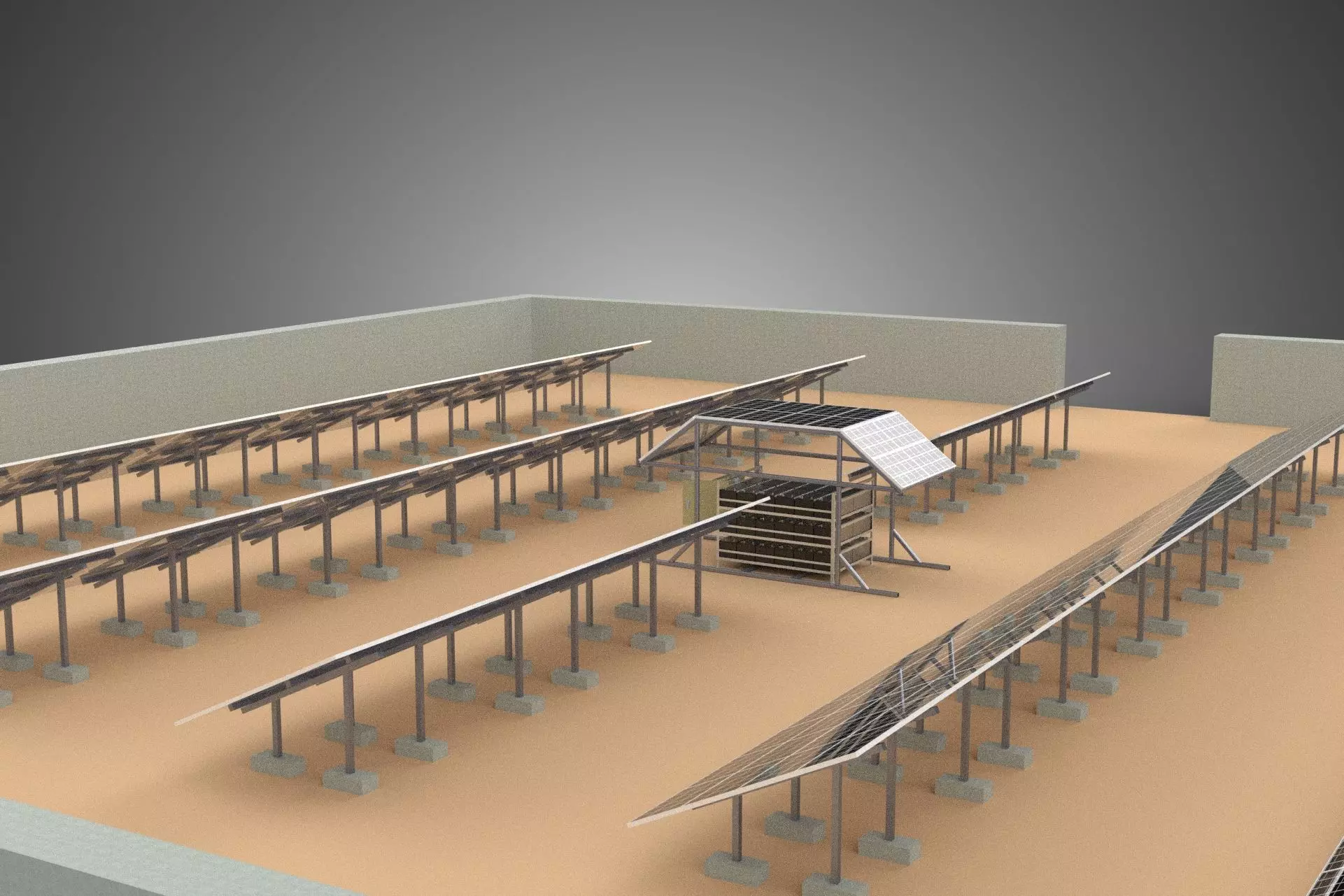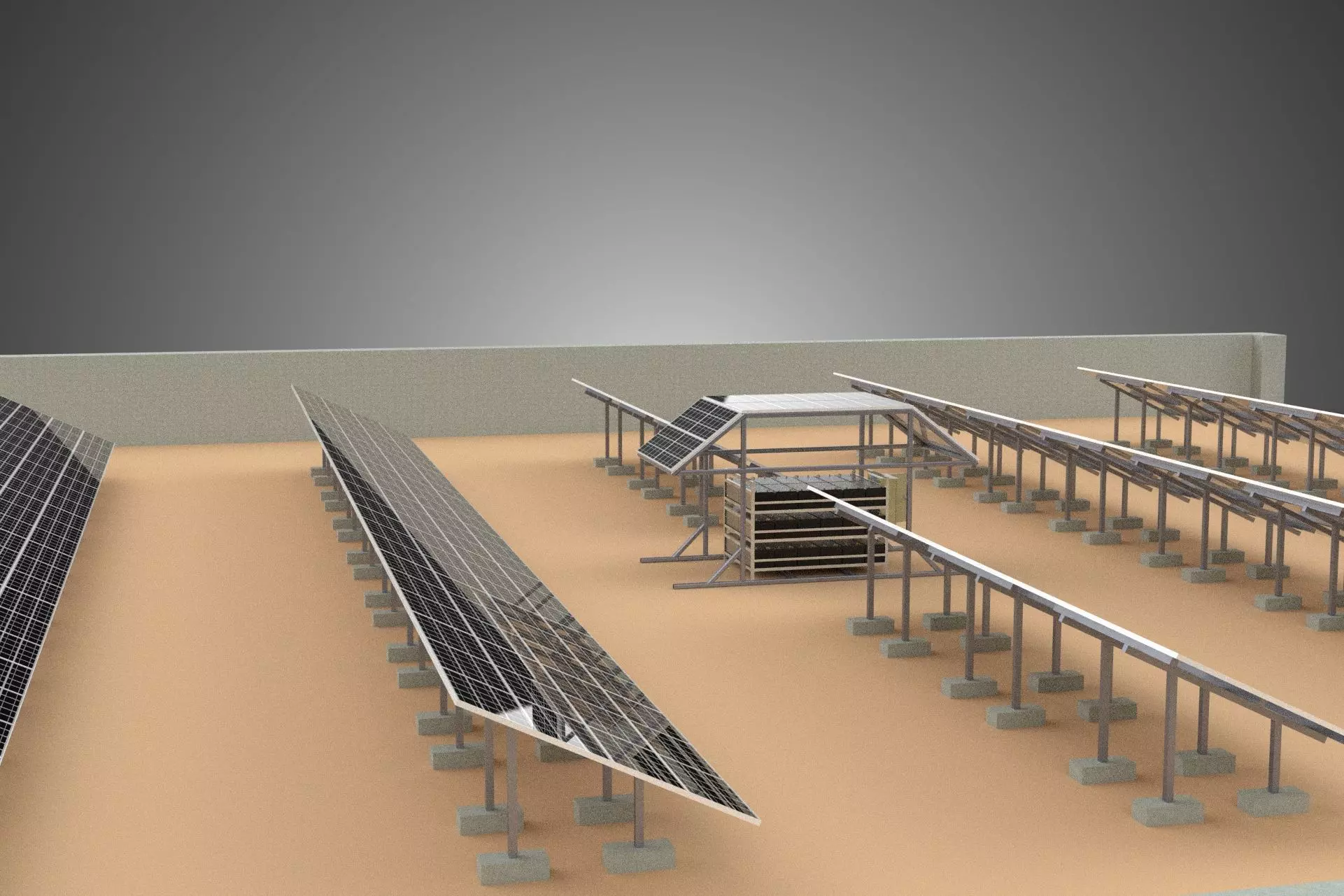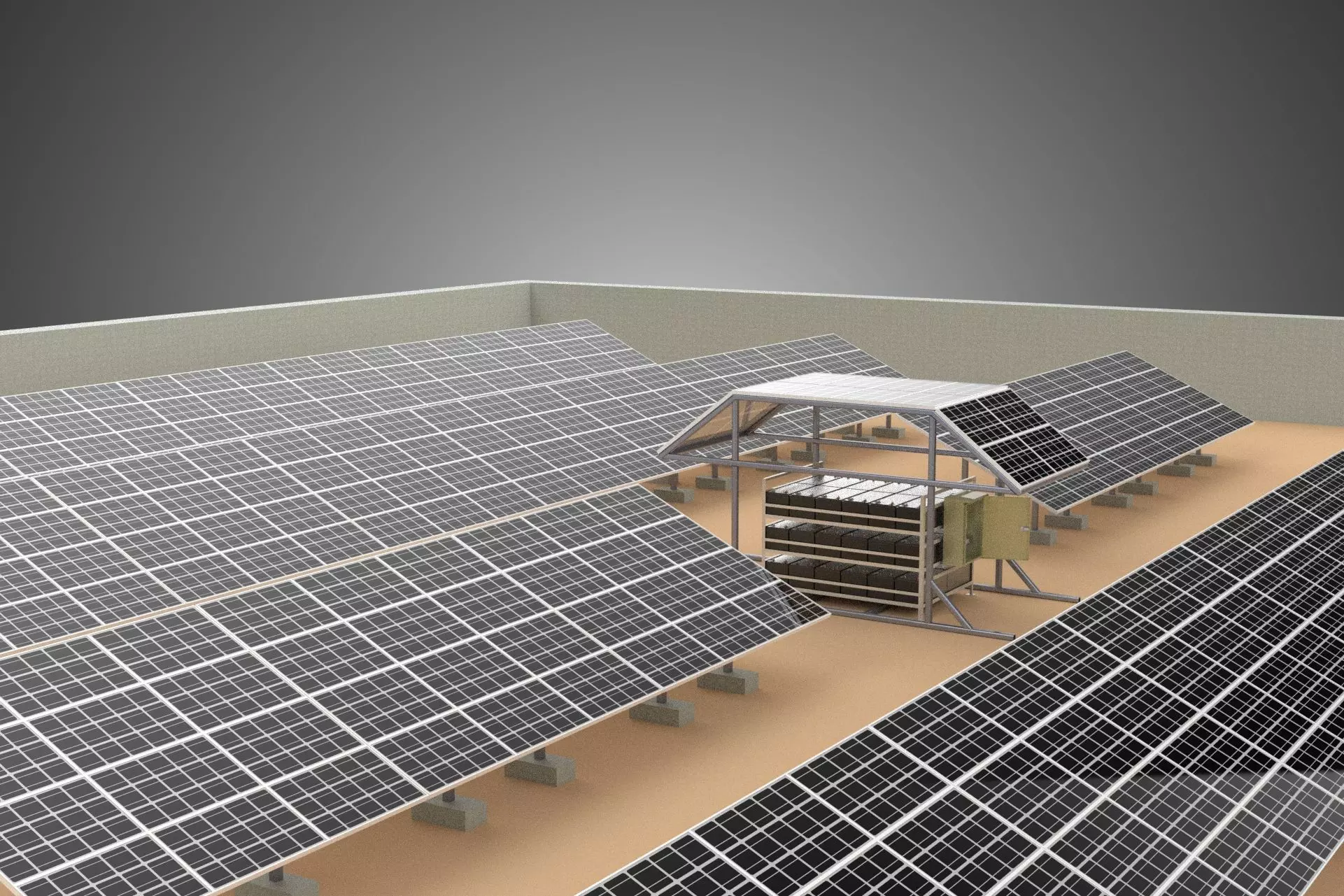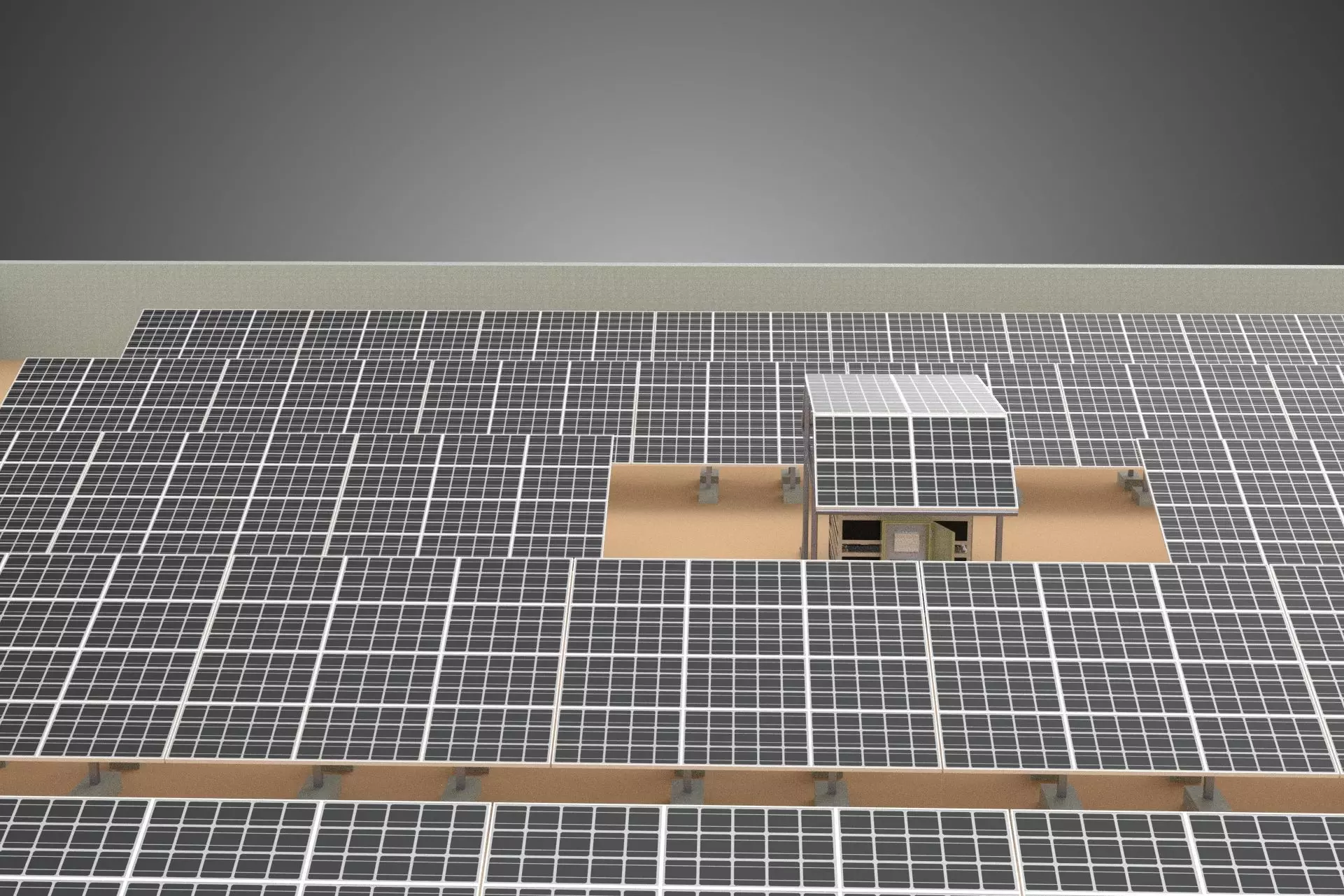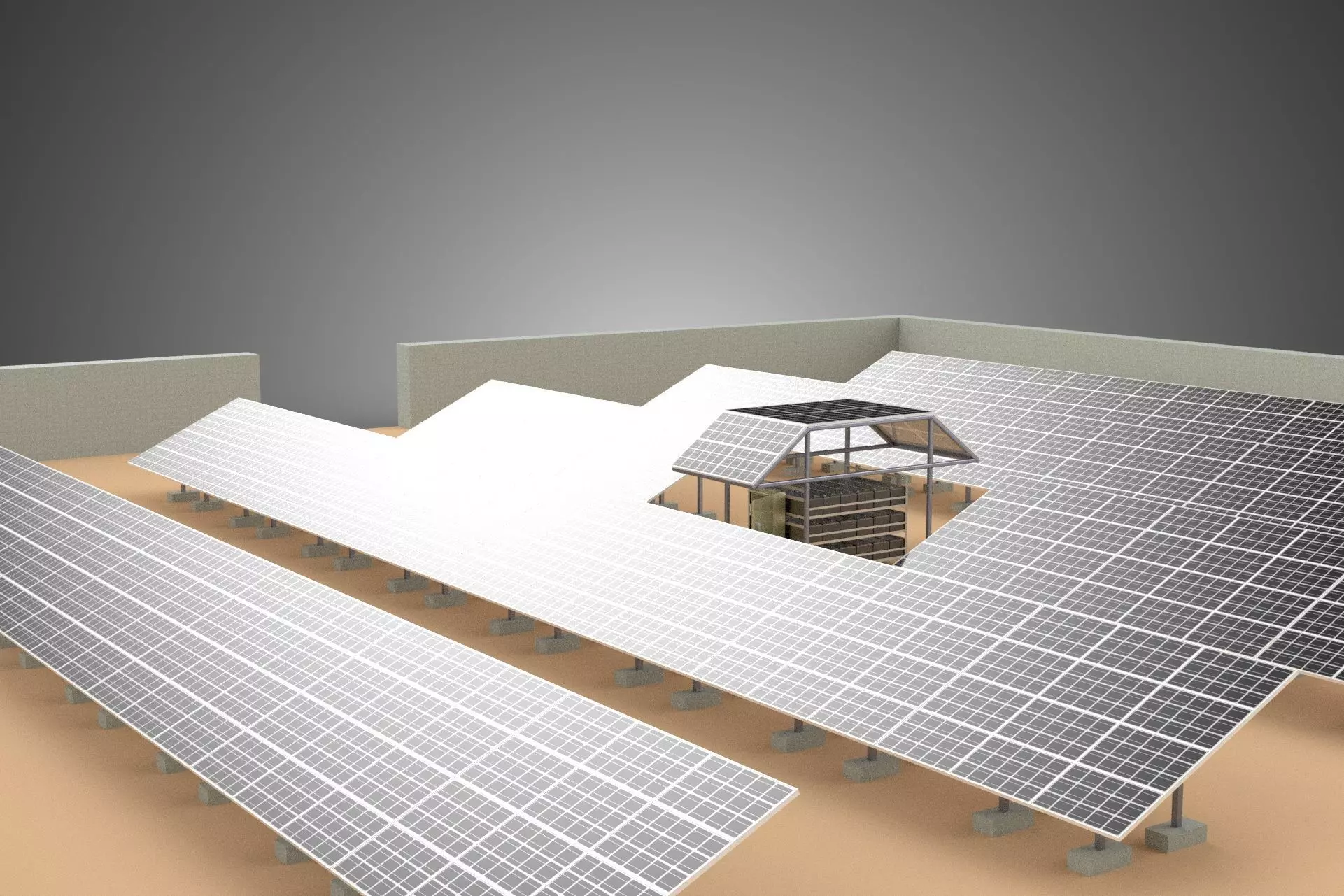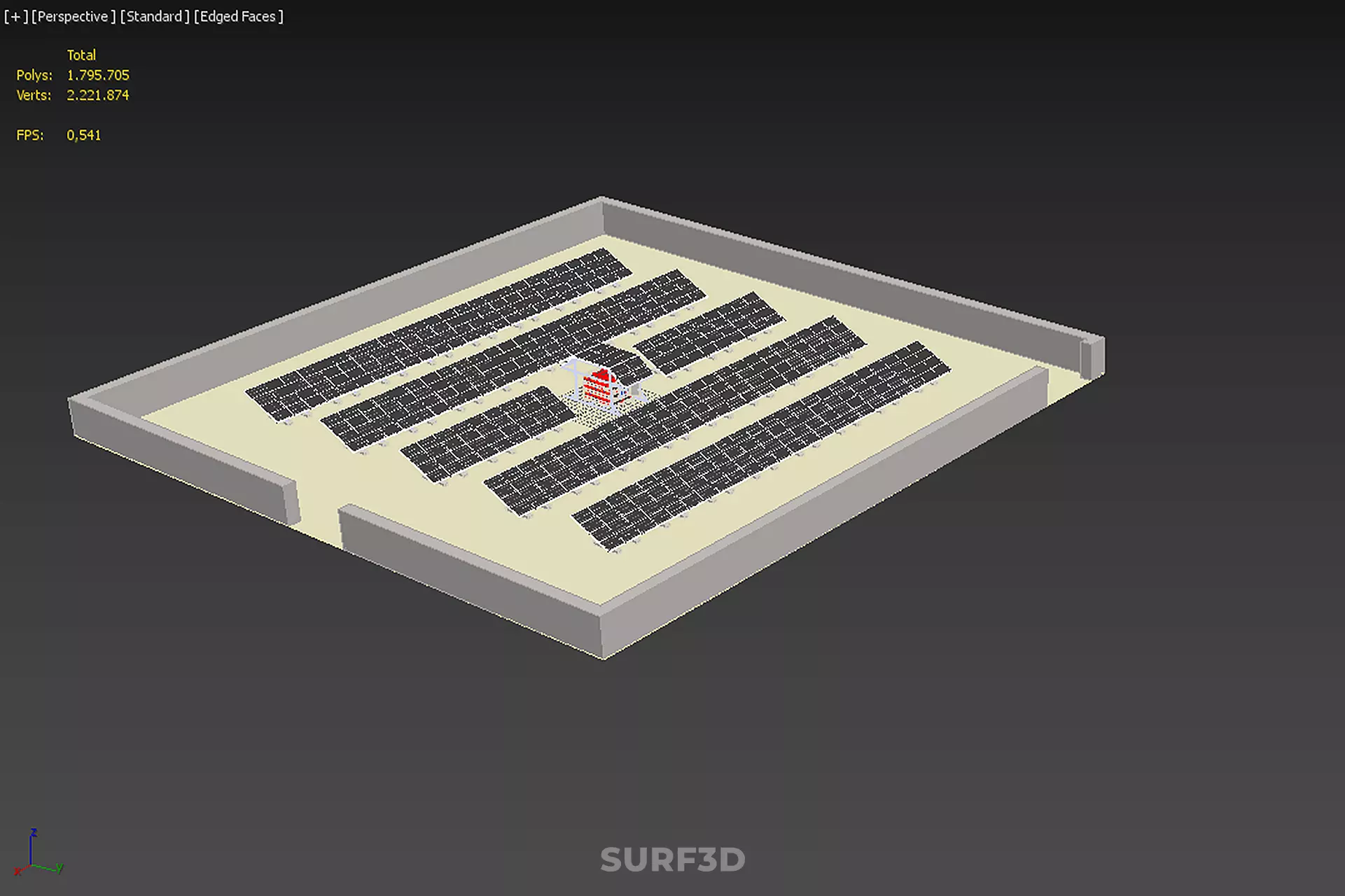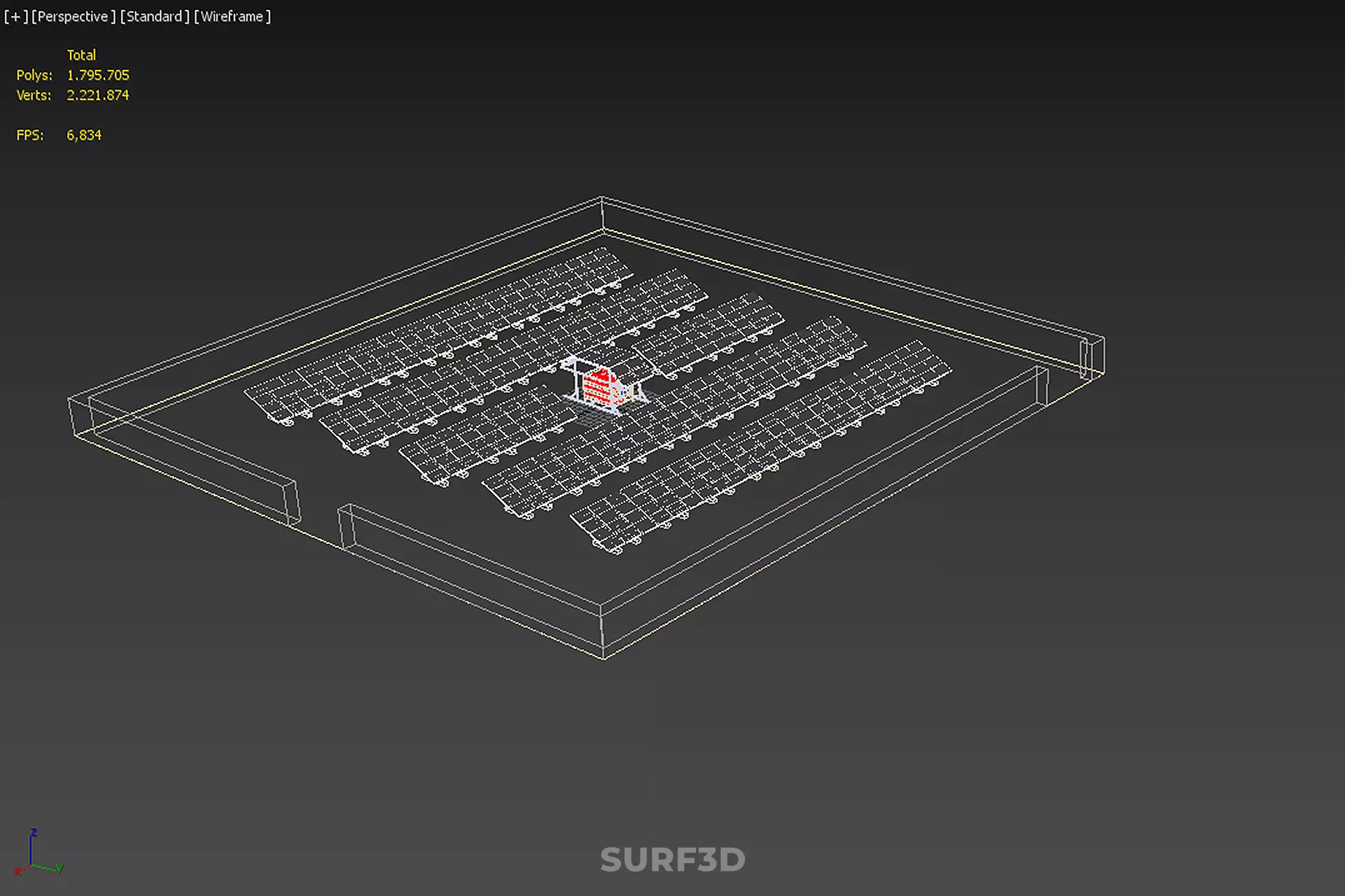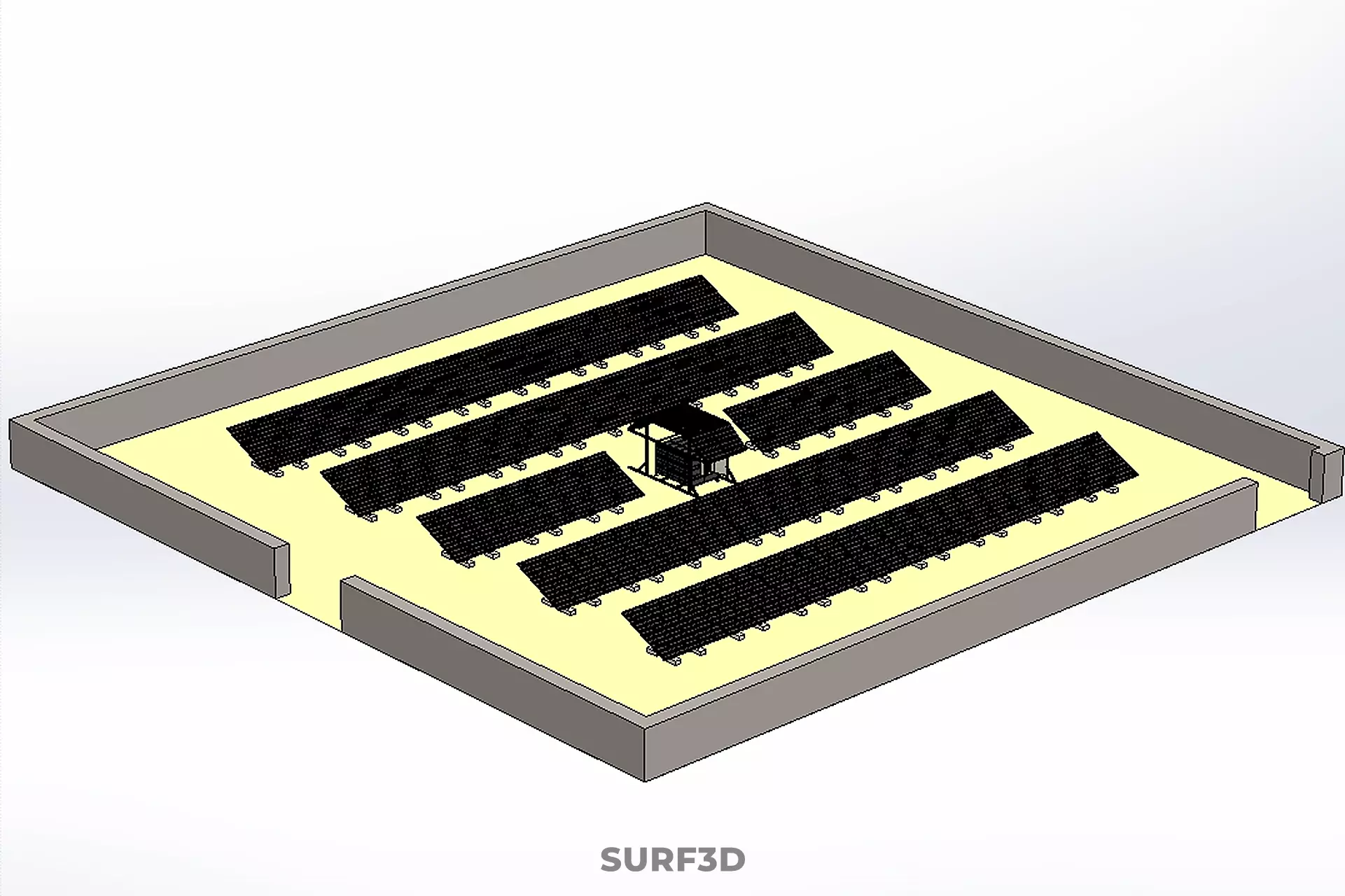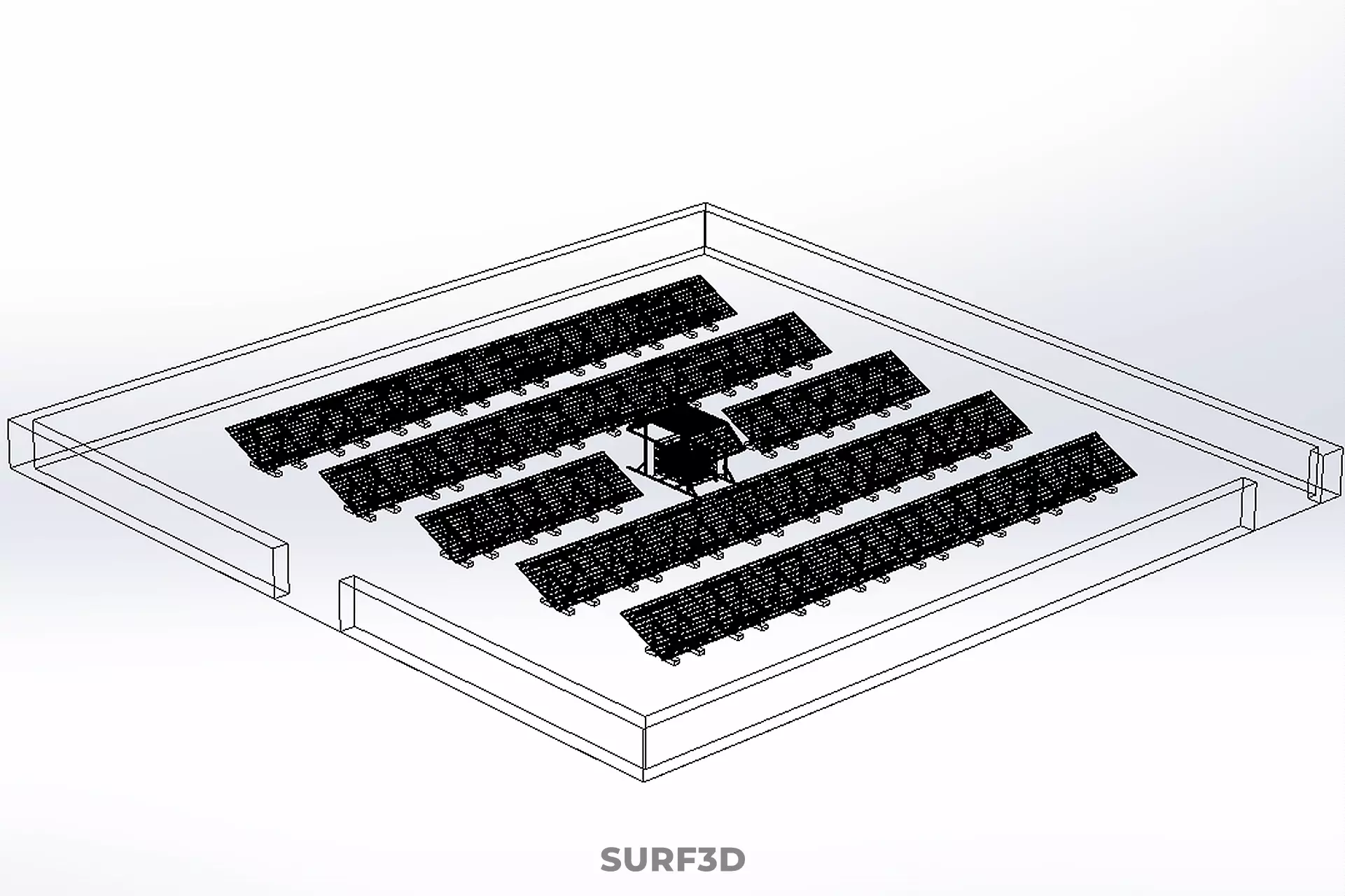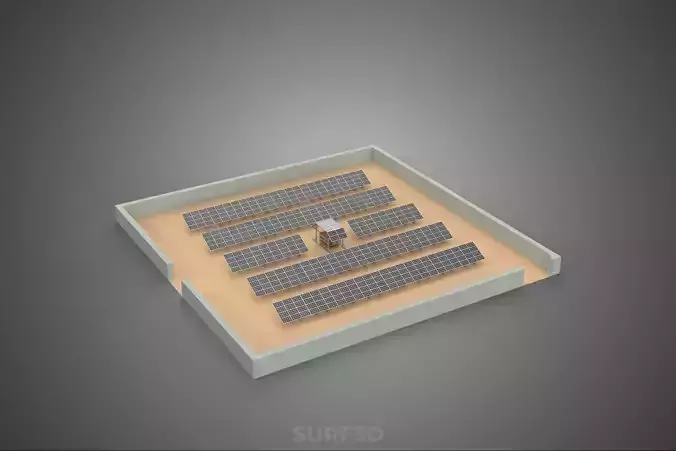
SOLAR PANEL POWER LAYOUT SITE INFRASTRUCTURE ENERGY PHOTOVOLTAIC 3D model
High-quality 3D assets at affordable prices — trusted by designers, engineers, and creators worldwide. Made with care to be versatile, accessible, and ready for your pipeline.
Included File Formats
This model is provided in 14 widely supported formats, ensuring maximum compatibility:
• - FBX (.fbx) – Standard format for most 3D software and pipelines
• - OBJ + MTL (.obj, .mtl) – Wavefront format, widely used and compatible
• - STL (.stl) – Exported mesh geometry; may be suitable for 3D printing with adjustments
• - STEP (.step, .stp) – CAD format using NURBS surfaces
• - IGES (.iges, .igs) – Common format for CAD/CAM and engineering workflows (NURBS)
• - SAT (.sat) – ACIS solid model format (NURBS)
• - DAE (.dae) – Collada format for 3D applications and animations
• - glTF (.glb) – Modern, lightweight format for web, AR, and real-time engines
• - 3DS (.3ds) – Legacy format with broad software support
• - 3ds Max (.max) – Provided for 3ds Max users
• - Blender (.blend) – Provided for Blender users
• - SketchUp (.skp) – Compatible with all SketchUp versions
• - AutoCAD (.dwg) – Suitable for technical and architectural workflows
• - Rhino (.3dm) – Provided for Rhino users
Model Info
• - All files are checked and tested for integrity and correct content
• - Geometry uses real-world scale; model resolution varies depending on the product (high or low poly)
• • - Scene setup and mesh structure may vary depending on model complexity
• - Rendered using Luxion KeyShot
• - Affordable price with professional detailing
Buy with confidence. Quality and compatibility guaranteed.
If you have any questions about the file formats, feel free to send us a message — we're happy to assist you!
Sincerely,
SURF3D
Trusted source for professional and affordable 3D models.
More Information About 3D Model :
A Photovoltaic (PV) Solar Panel Power Energy Layout Site Infrastructure refers to the comprehensive, integrated system of components, civil works, and electrical networks meticulously designed and constructed to harness solar energy and convert it into usable electrical power at a specific geographical location. This infrastructure forms the backbone of solar power generation facilities, ranging from utility-scale solar farms to commercial and industrial rooftop installations, and is meticulously planned to ensure optimal energy yield, operational efficiency, and long-term reliability.
The core of this infrastructure revolves around photovoltaic modules (solar panels), which convert sunlight directly into direct current (DC) electricity via the photovoltaic effect. These modules are strategically arranged in arrays, which are then mounted on support structures. These structures vary significantly based on site conditions and design objectives, including fixed-tilt systems for simplicity, single-axis trackers that follow the sun's path east-to-west, or dual-axis trackers offering maximum insolation capture by tracking both azimuth and elevation. The choice of mounting system directly impacts the energy layout by determining panel density, inter-row spacing (critical for mitigating self-shading), and overall land utilization efficiency.
Beyond the panels, the electrical balance of system (BoS) components are crucial. These include:
- Inverters: Devices that convert the DC electricity generated by the modules into alternating current (AC), suitable for grid connection or direct consumption. Inverters can be string inverters, central inverters for large arrays, or micro-inverters paired with individual panels for enhanced performance and monitoring.
- Cabling and Wiring: Extensive networks of DC and AC cabling connect modules, combiners, inverters, and the main switchgear, designed to minimize energy losses and ensure safety.
- Combiner Boxes and Disconnects: Electrical enclosures that aggregate DC circuits from multiple strings and provide safety disconnect switches.
- Transformers: Essential for stepping up the voltage from the inverters to the appropriate level for transmission to the grid, particularly in utility-scale projects.
- Switchgear and Protection Devices: Circuit breakers, fuses, and surge protection devices safeguard the system against electrical faults and ensure reliable operation.
- Monitoring and Control Systems (SCADA): Sophisticated hardware and software platforms that continuously track system performance, detect faults, and enable remote management, optimizing energy output and facilitating predictive maintenance.
Site Selection and Preparation are fundamental to the infrastructure's success. This phase involves:
- Resource Assessment: Detailed analysis of solar insolation data, temperature profiles, and prevalent weather patterns.
- Geotechnical and Topographical Surveys: Evaluating soil conditions for foundation design, assessing land contours, and identifying potential environmental constraints.
- Environmental Impact Assessment (EIA): Addressing ecological considerations, land use changes, and securing necessary permits and regulatory approvals.
- Civil Works: Extensive land grading and leveling, construction of access roads for installation and maintenance, perimeter fencing for security, and establishing drainage systems to prevent erosion and water accumulation.
- Foundations: Designing and installing appropriate foundations (e.g., driven piles, concrete piers, ballasted systems) to securely anchor the mounting structures against wind loads and seismic activity.
The Layout Design phase integrates these elements, optimizing the spatial arrangement of panels, inverters, and electrical pathways. Key considerations include:
- Module Orientation and Tilt Angle: Maximizing annual energy harvest by aligning panels to capture maximum sunlight, often factoring in seasonal variations and latitude.
- Row Spacing: Delineating sufficient distance between panel rows to prevent inter-row shading, especially during low sun angles, which can significantly reduce energy production.
- Electrical Stringing: Grouping modules into electrical strings to match inverter voltage windows, balancing voltage drop and current considerations.
- Access and Maintenance: Ensuring adequate pathways for cleaning, inspections, and repairs of equipment.
- Future Expansion: Incorporating provisions for potential capacity increases.
Finally, Grid Integration Infrastructure connects the PV power plant to the broader electrical grid. This typically includes a substation with transformers, switchgear, and protective relays, along with transmission lines or distribution feeders. In modern systems, energy storage solutions, primarily battery energy storage systems (BESS), are increasingly integrated to manage intermittency, provide grid stability services (e.g., frequency regulation, voltage support), and enable dispatchable solar power.
The comprehensive design and execution of photovoltaic solar panel power energy layout site infrastructure are imperative for establishing efficient, reliable, and sustainable sources of renewable electricity, contributing significantly to global decarbonization efforts.
KEYWORDS: Photovoltaic, Solar Panel, Renewable Energy, Site Infrastructure, Energy Layout, PV System, Inverter, Balance of System, BoS, Grid-tied, Solar Farm, Module, Array, Mounting Structure, Tracker, Civil Works, Site Preparation, Electrical Design, DC-AC Conversion, Solar Insolation, Geotechnical Survey, Environmental Impact Assessment, EIA, SCADA, Energy Storage, Battery Energy Storage System, BESS, Grid Integration, Transformer, Switchgear, Power Plant.

